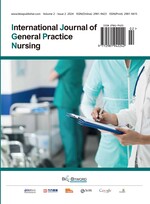Abstract
Objective: To analyze the application effect of the problem-based learning (PBL) teaching method combined with flipped classrooms in the standardized training of gastroenterology residents. Methods: Sixty-five resident trainees who were admitted to the Department of Gastroenterology of the hospital from January to December 2023 were selected and divided into the control group (n = 33) and the observation group (n = 32) by random number division method. The control group implemented the traditional clinical teaching method, and the observation group implemented the PBL combined flipped classroom teaching method. The study compared the two groups’ discharge learning performance, trainees’ subjective feeling score, and teaching satisfaction score index. Results: The difference in basic knowledge scores between the two groups of trainees under different teaching modes was not statistically significant (P > 0.05). However, the observation group was significantly higher than the control group in terms of the differences in case analysis, clinical operation skills, and total scores, and the differences were statistically significant (P < 0.05). The trainees of the observation group were more satisfied with the teaching and learning process in terms of learning efficiency, clinical thinking, communication, faculty-student collegiality, teamwork, self-study ability, classroom atmosphere, independent learning, clinical thinking and other subjective feelings of the scores are higher than the control group, the difference is statistically significant (P < 0.05). The observation group teaching total satisfaction rate is 96.87%, significantly higher than the control group’s 75.75% (P < 0.05). Conclusion: The application of the PBL teaching method combined with flipped classroom in the standardized training of residents is effective, which can not only significantly improve the basic theory and practical operation performance of the trainees, but also help to improve their case analysis ability, clinical thinking ability, and doctor-patient communication ability, so it is worthwhile to popularize its application in the clinical scope.
References
Wu Y, Jiang ZY, 2023, Research on the Application of “CBL+PBL+SP” Integrated Teaching Method in Gastroenterology Clinical Internship. Western Quality Education, 9(17): 165–168.
Wang XM, 2022, Research on the Application of Flipped Classroom Combined with Bedside Case Teaching in Gastroenterology Nursing Teaching. China Higher Medical Education, 2022(07): 126–127.
Wu DD, Li L, Pang XX, 2022, Application of Flipped Classroom in Nursing Teaching of Digestive System Diseases. China Continuing Medical Education, 14(06): 17–20.
Hou L, 2019, Analysis of the Application Effect of PBL Teaching Mode in Gastroenterology Traineeship. Education and Teaching Forum, 2019(51): 196–197.
Wei DM, He GN, Yang WJ, 2017, The Effect of Applying PBL Teaching Method in the Standardized Training of Gastroenterology Residents. Chinese Rural Medicine, 24(03): 67–68.
Nie WJ, Xie XF, Hou LY, et al., 2021, Application of Flipped Classroom Teaching Mode in Nursing Teaching in Gastroenterology. Chinese Journal of Modern Nursing, 27(26): 3627–3631.
